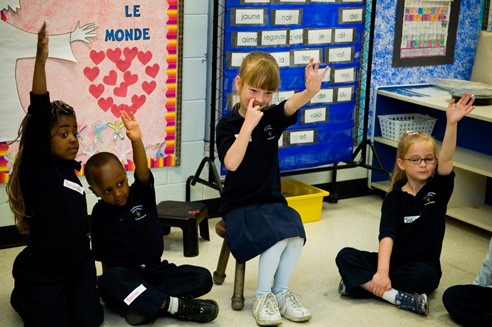
How seriously should bullying be taken?
SCENARIO: You overhear Students 1, 2 and 3 planning a party at the house of one of the students. Student 4, who has special needs, is sitting on her own, looking lonely and anxious. Students 1 and 2 are looking sideways at her, and giggling. Student 3 looks unhappy.
These situations are often difficult to manage. They often occur in secret and may be very subtle. The situation is made even more difficult and complex by the fact that the party is to take place in someone’s home, which is outside of your place of work (though this does not diminish the responsibility to intervene). By not reacting immediately and deciding to observe the situation for a while longer, you’re giving yourself some time to see if there are other more explicit signs indicating a problem.
This option does not allow you to deal with the bullying. Student 4 continues to be excluded. By waiting to take action, we risk allowing the bullying to escalate and Student 4’s suffering to intensify. This option increases her vulnerability.
Student 3 is uncomfortable and this option does not enable you to build her capacity to act as an ally. Learning opportunities for Students 1, 2 and 3 have been missed. No support has been offered to Student 4 and her exclusion has been exacerbated.
2You realize that this is most likely a serious problem, given the apparent distress of Student 4. You decide to take action immediately, without waiting, in order to interrupt the situation and communicate to the students that bullying is unacceptable.
The students involved realize that you take bullying seriously, whatever its form. Even more importantly, other students will also understand this.
You have demonstrated to all the students that you are an adult resource person.
3You think to yourself: “What a shame it is that some students never fit in.” You remind yourself to reach out to the student with special needs.
Your compassion is a sign of your kindness and caring. The decision to protect Student 4, whom you believe may continue to experience difficulties at school and elsewhere in her life, demonstrates your concern for her. Furthermore, reaching out and maintaining contact with a vulnerable student can be an important way of establishing yourself as an adult resource person.
The bullying problem has not been resolved and it is highly likely that Student 4 will continue to be targeted. In fact, it is likely that the bullying will escalate.
While the idea of maintaining contact with Student 4 to ensure she is no longer bullied is founded upon the best of intentions, it is unrealistic as the only strategy to stop the bullying. Adults cannot be present in young people’s lives at every moment. Furthermore, this approach does not enable Student 4 to develop skills to protect herself from future assault (skills such as, the ability to know when and how she might ask for an adult’s help). Nor does it help to build her self-confidence.
This approach may be comforting, but it will not demonstrate the importance of respecting differences and fostering inclusion. Nor will it enable students to learn pro-social skills to interrupt the cycle of bullying. Despite your good intentions, this rather fatalistic approach increases students’ vulnerability to bullying since it perpetuates the attitudes and beliefs underlying the problem. Student 4 remains socially isolated. The important values and beliefs embraced by the school are not articulated and made explicit. Furthermore, as a person with special needs, Student 4 belongs to a social group that lacks power and status in our society. As such, the attitudes, beliefs and stereotypes that are played out in this scenario are more easily reinforced and perpetuated if not directly addressed (see Module 10).
✓Explanation of the recommended response.
Recommended response and explanation: The second answer is the recommended response. All three responses demonstrate concern for Student 4; however, only in the second response does this concern translate into tangible action aimed at ending the bullying. The second response enables all students to learn that bullying is serious, that it is unacceptable and that it will not be tolerated.
Note: For more information and strategies for intervening in a bullying situation, see Module 7.
